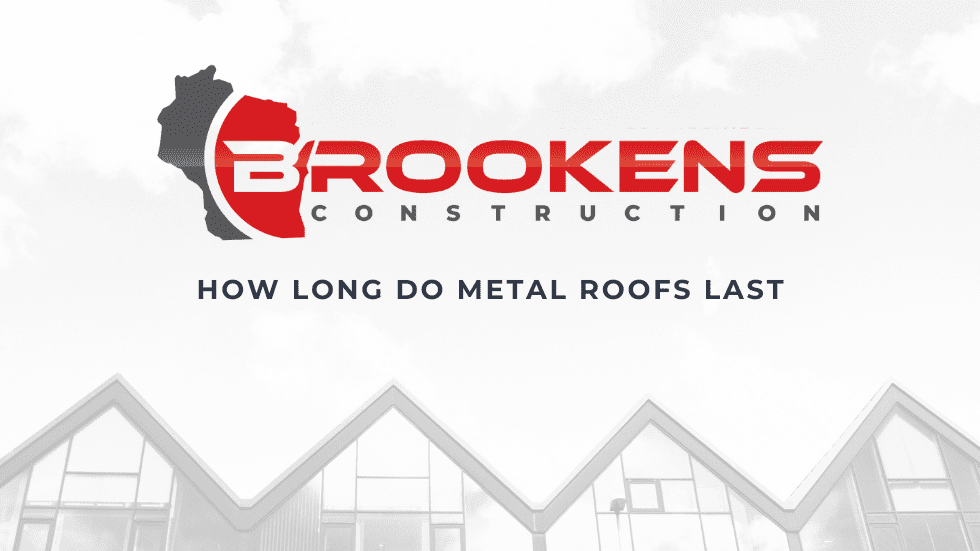Madison, Appleton, and Milwaukee homeowners are turning towards metal roofing as a long-term solution for their homes. This shift raises a critical question: How long do metal roofs last in Wisconsin cities known for their varying climate? We dive deep into the factors that contribute to the longevity of metal roofs.
Metal Roofs: A Wisconsin Perspective
Metal roofing has become a popular choice for homeowners in Madison, Appleton, and Milwaukee due to its durability, energy efficiency, and sustainability. But one of the most pressing questions for anyone considering this investment is: How long can I expect my roof to last in the unique Wisconsin climate?
The Lifespan of Metal Roofs
Metal roofs are known for their longevity, typically lasting between 40 to 70 years, depending on the material. For example, aluminum and steel roofs, common choices in Wisconsin due to their resistance to corrosion, can last over 50 years with proper maintenance. Copper and zinc roofs offer even greater durability, with lifespans that can exceed 100 years.
Climate Impact on Roofing in Wisconsin
The climate in Madison, Appleton, and Milwaukee can be harsh, with cold, snowy winters and warm, humid summers. Fortunately, metal roofs are well-equipped to handle these conditions. Their traits reduce cooling costs in the summer, while staying resistant to damage from snow and ice in the winter. Additionally, these roofs can withstand high winds, making them an excellent choice for areas that get severe weather.
Roof Maintenance and Durability
While metal roofs are relatively low maintenance, regular inspections and upkeep are crucial to extending their lifespan. In Wisconsin, removing debris and snow, checking for signs of corrosion, and ensuring proper ventilation are key maintenance tasks. Homeowners should also look for any signs of damage after severe weather events and have repairs done promptly to avoid more significant issues.
Choosing the Right Roof Material
The longevity of a roof also depends on the material. In Madison, Appleton, and Milwaukee, galvanized steel and aluminum are popular due to their durability and affordability. For those looking for a premium option, copper and zinc offer great longevity and an impressive appearance but come at a higher cost. When selecting a roof, considering the specific climate and environmental conditions of your area is needed.
Cost vs. Value: Is a Metal Roof Worth It?
When considering longevity, it’s also important to consider the cost versus the value they provide. While the initial investment in a metal roof may be higher than other roofing materials, the long-term savings on maintenance, energy costs, and the potential for a longer lifespan can make it a more cost-effective choice over time. Additionally, these roofs can increase the value of your home and offer a unique aesthetic appeal.
Conclusion
For homeowners in Madison, Appleton, and Milwaukee, metal roofs offer a durable, long-lasting, and energy-efficient solution capable of withstanding Wisconsin’s challenging climate. With life spans ranging from 40 to over 100 years, depending on the material, metal roofs represent a wise investment for those looking for longevity and value. By choosing the right material and ensuring regular maintenance, homeowners can enjoy the benefits of a roof for decades to come.
Frequently Asked Questions:
- How does snow affect metal roofs in Wisconsin?
Metal roofs are designed to shed snow efficiently, reducing the risk of accumulation and potential damage. Their smooth surface allows snow to slide off more easily than other roofing materials.
- Can metal roofs withstand high winds?
Yes, these types of roofs are known for their wind resistance, making them suitable for areas in Wisconsin prone to severe weather conditions, including high winds.
- Are metal roofs more expensive than traditional roofing materials?
Initially, metal roofs can be more expensive than asphalt shingles or other traditional materials. However, their longer lifespan and lower maintenance costs can make them more cost-effective in the long run.

